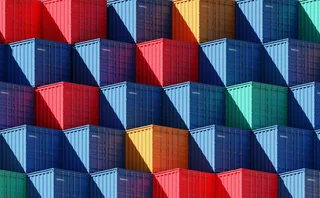
Corporate risk manager of the year: Uniper
Energy Risk Awards 2020: Uniper’s risk management approach to capital allocation, de-risking assets and pricing helps German utility shore up balance sheet

When it was spun off from E.on Group in 2016, Uniper inherited one-third of the balance sheet and two-thirds of the risk of the former combined group. Clearly, prudent risk management was going to be essential to the firm’s prosperity.
Over the following four years, Uniper’s risk management team developed a suite of innovative tools for allocating capital, de-risking asset operations, and making deal and asset valuations. This enabled decision-making around which risks to seek and which to warehouse or reject, and played a major role in the firm turning its net income from -€3.23 billion in 2016 to €644 million at the end of fiscal year 2019.
“We take a holistic and entrepreneurial approach to risk and look at where we can add value to the business,” says Uniper’s chief risk officer Novera Khan. “Risk is inherent to our business, so we’re not trying to eliminate it.”
The Uniper risk management team focuses on the core areas of credit, market, insurance and enterprise risk management, while operational risks are managed in a more decentralised way, with experts in each area forming a community of enterprise risk managers. Its overall risk appetite across all risk classes is revised and set at least once a year.
The risk team focuses on understanding its wide-ranging exposures, how these are correlated and what the impact is of diversification across its entire portfolio. As its business consists of power generation in Europe and Russia, as well as a large gas midstream business, including energy storage and commodity trading globally, it is exposed to commodity prices, a wide range of fast-changing energy policies and global trends in decarbonisation, digitalisation and the decentralisation of energy supply.
To this end, the risk management team has developed a tool to provide insight into correlations and diversification across its business, with the purpose of optimising the allocation of risk capital. Known as Market Risk Map, the tool advises the business decision-makers on the marginal contribution of additional business and on optimal hedging strategies across commodities and time horizons. Since its implementation three years ago, it has helped Uniper save around €300 million a year in economic risk capital, Khan says.
The ‘map’ dynamically analyses correlations to show the concentration of risk in the portfolio. By looking across currencies and product markets, as well as macroeconomics, the map can explain variations in diversified value-at-risk and what is driving a particular risk concentration.

“By using correlations, we can say which commodities are moving as a result of another commodity moving, and therefore see which ones are absorbing and which are increasing risk,” says Marco Aimasso, global head of market risk.
“Analysing our portfolio in this way has taught us a lot about portfolio construction and enabled us to deploy risk capital more efficiently than we would have done otherwise,” says Khan. “It’s played a really important role in Uniper’s success.”
Another area of risk management focus has been the risk-based allocation of maintenance and repair budget for its power-generating assets. A company-wide process was developed to set standards for risk assessments and audits, replacing a more ad hoc approach.

“It’s quite a unique approach for a firm to manage this centrally with company-wide standards,” notes Winfried Maus, head of insurance. “The findings are all centrally linked and are used to steer our maintenance budgets.” He estimates this central approach has saved around €1 million a year in administration and process costs, and that doesn’t take into account the de-risking of the assets.
When there is no competitive advantage to managing a risk, or no real ability to do so – such as fire or natural disasters – the firm uses external insurance markets. The company-wide risk assessment process has worked well here too, with the results being well received and used by the international insurance market. This has given Uniper better access to the insurance markets, reduced the number of audits required and resulted in significant savings, says Maus.
Another major focus of the risk management team has been the development of quantitative methods to improve the quality and speed of valuations and pricing across traded products and assets.
“Pricing is always a key challenge,” says Harald Ullrich, head of quantitative methods. “If you use outdated or inconsistent versions of pricing tools you risk losing money, so we wanted to eliminate this risk by developing a central pricing engine.”

This is now available across the company in the cloud and “is a huge benefit that we couldn’t have fully appreciated before”, he says.
The team also developed a platform that allows much faster deployment of new models, calibrations and entire run-time environments. “Model changes that might have taken eight weeks before can now be done in around a day,” he says.
This focus on digitalisation also includes the development of a product that uses artificial intelligence to dispatch Uniper’s contracted renewable production. The machine considers live prices and order books for hourly and quarter-hourly contracts against Uniper’s continuously updated wind forecasts. Based on this data, the algorithm determines the optimal trading decision for each of the 24 hourly and 96 quarter-hourly products in the power market in real time, something nearly impossible for a human dispatcher.
Only users who have a paid subscription or are part of a corporate subscription are able to print or copy content.
To access these options, along with all other subscription benefits, please contact info@risk.net or view our subscription options here: http://subscriptions.risk.net/subscribe
You are currently unable to print this content. Please contact info@risk.net to find out more.
You are currently unable to copy this content. Please contact info@risk.net to find out more.
Copyright Infopro Digital Limited. All rights reserved.
As outlined in our terms and conditions, https://www.infopro-digital.com/terms-and-conditions/subscriptions/ (point 2.4), printing is limited to a single copy.
If you would like to purchase additional rights please email info@risk.net
Copyright Infopro Digital Limited. All rights reserved.
You may share this content using our article tools. As outlined in our terms and conditions, https://www.infopro-digital.com/terms-and-conditions/subscriptions/ (clause 2.4), an Authorised User may only make one copy of the materials for their own personal use. You must also comply with the restrictions in clause 2.5.
If you would like to purchase additional rights please email info@risk.net
More on Commodities
Energy Risk Commodity Rankings 2025: political upheaval adds to commodity market risk
The 2025 Commodity Rankings reveal the brokers and dealers that market players turn to in challenging times
Energy Risk Software Rankings 2025: market upheaval puts emphasis on IT systems
Quality of risk management key to performance in today’s volatile markets
Corporates keep the faith on net-zero goal
Large corporates’ energy transition includes trading and risk management in energy and commodities markets
Energy Risk Asia Awards 2024: The winners
Winning firms adapt to change with exemplary risk management skills
Foreign funds are bulls in China’s onshore commodity futures
Growing participation from overseas investors is boosting liquidity in what’s already a boom market
Energy Risk Software Rankings 2024: IT demands increase amid rising risk
Heightened geopolitical and credit risk increase requirements on commodities software
Energy Risk Asia Awards 2023: The winners
Winning firms demonstrate resilience and robust risk management amid testing times
ION Commodities: addressing the market’s recent pain points
Energy Risk Software Rankings winner’s interview: ION Commodities
Most read
- Trump tariffs turn swap spreads into ‘pain trade’
- Hedging playbook goes ‘out the window’ as Trump tariffs slam markets
- The end of the world, or an artificial crisis?























